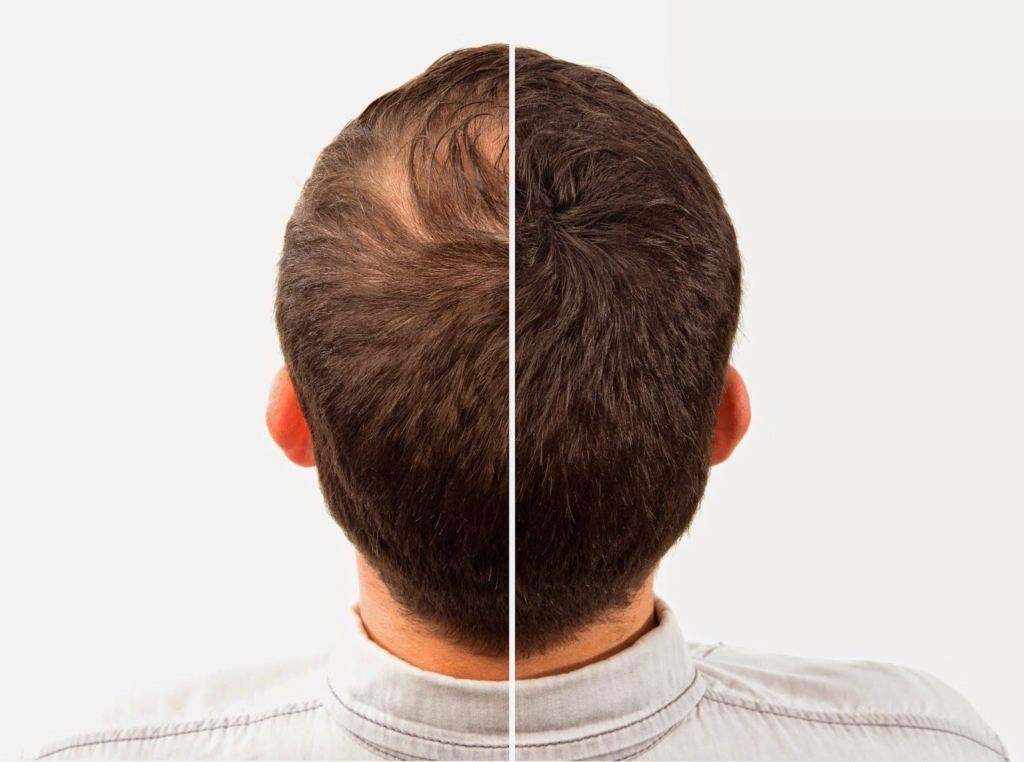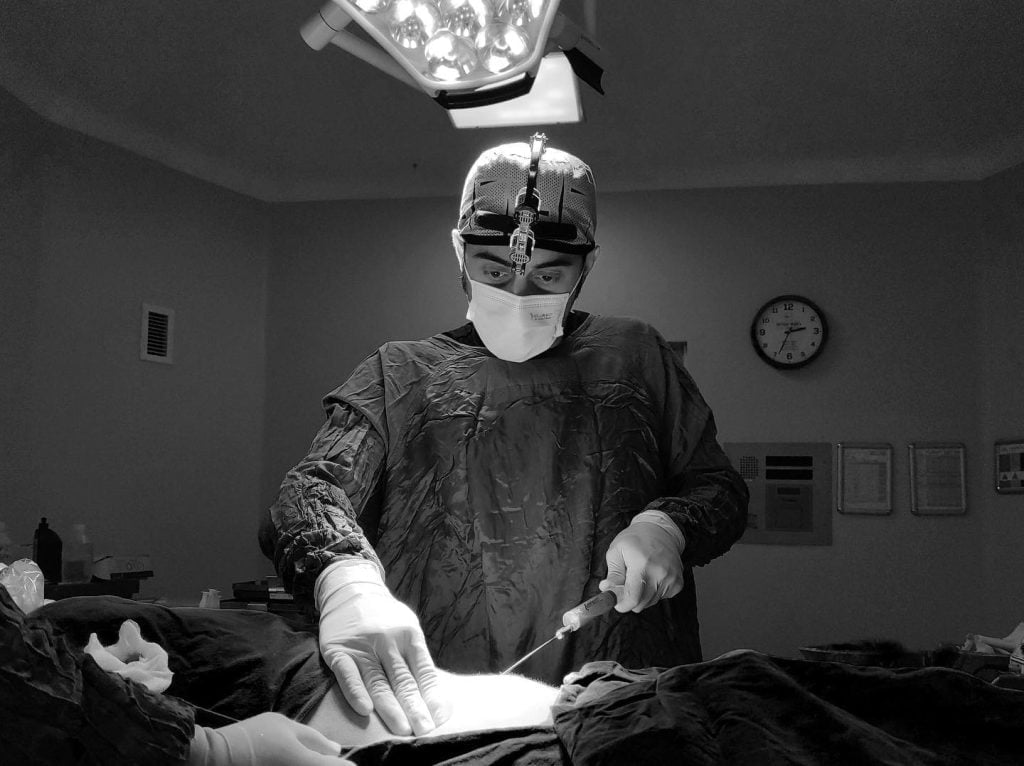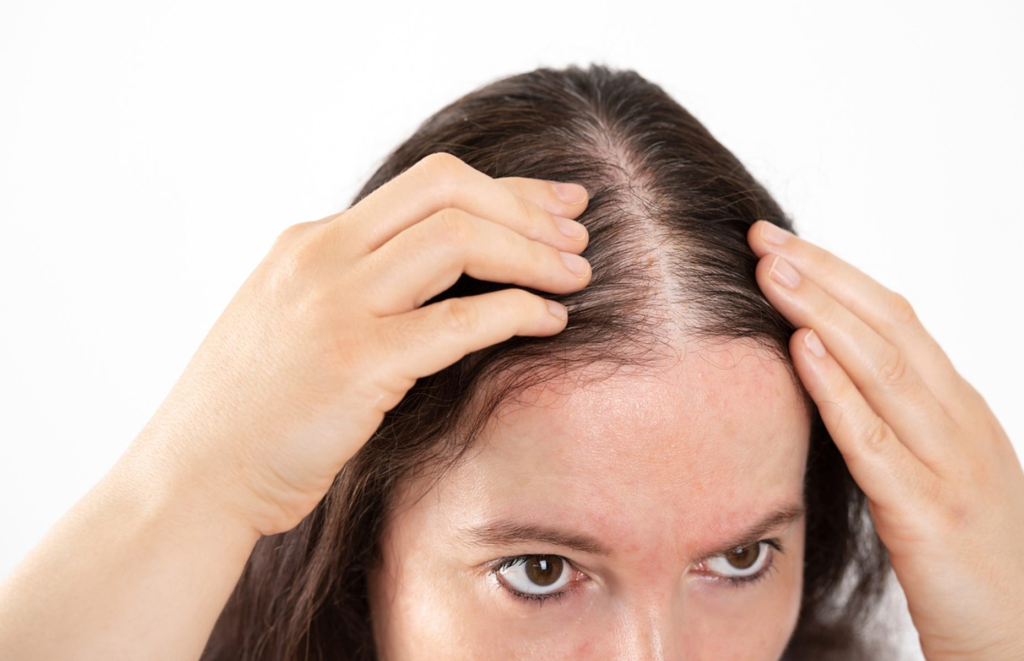Which Country is Best for Hair Transplant? Hair transplant is a hair restoration surgery that involves moving hair follicles from one part of the body to another, usually from the back or sides of the head to the balding areas. It is a popular and effective hair loss treatment for people who suffer from alopecia, or baldness. Hair transplant can improve the appearance and confidence of people who are unhappy with their hair.
However, hair transplant is not a simple or cheap procedure. It requires a lot of skill, experience, and equipment to perform successfully. The quality and cost of hair transplant can vary greatly depending on the country, clinic, and surgeon you choose. Therefore, it is important to do your research and compare your options before deciding where to get your hair transplant.
In this article, we will explore some of the factors that you should consider when choosing a country for hair transplant, such as:
- The types and techniques of hair transplant available
- The cost and quality of care
- The surgeon experience and qualifications
- The clinic accreditation and reputation
- The language spoken and communication barriers
- The travel time and logistics
- The medical tourism and vacation opportunities
We will also review some of the most popular and reputable countries for hair transplant in the world, such as:
- Turkey
- India
- Thailand
- Poland
- Hungary
- Mexico
- Spain
- Belgium
- Germany
- USA
- United Kingdom
By the end of this article, you will have a better idea of which country is best for hair transplant according to your needs, preferences, and budget. Let’s get started!

Table of Contents
Types and Techniques of Hair Transplant
One of the first things you should know about hair transplant is that there are different types and techniques of hair transplant available, and each one has its own advantages and disadvantages. The most common types of hair transplant are:
- Follicular unit transplantation (FUT): This is also known as strip harvesting, and it involves removing a strip of skin from the donor area, usually the back of the head, and dividing it into small grafts containing one to four hair follicles each. These grafts are then implanted into the recipient area, where tiny incisions are made. This technique can produce a high number of grafts in one session, but it also leaves a linear scar on the donor area, which can be visible if the hair is short or thin. It also requires a longer recovery time and more post-operative care.
- Follicular unit extraction (FUE): This is also known as micro FUE, and it involves extracting individual hair follicles from the donor area using a small punch device, and implanting them into the recipient area, where tiny incisions are made. This technique does not leave a visible scar on the donor area, and it allows for more flexibility in choosing the donor area, such as the beard, chest, or body hair. It also has a shorter recovery time and less post-operative care. However, it can be more time-consuming and expensive than FUT, and it may require multiple sessions to achieve the desired results.
- Direct hair implantation (DHI): This is a variation of FUE, and it involves using a special device called a choi implanter pen to extract and implant the hair follicles in one step, without making any incisions. This technique can provide more precision and control over the angle, depth, and direction of the hair follicles, and it can result in a more natural and dense look. However, it can also be more costly and require more skill and experience from the surgeon.
- Robotic hair transplant: This is a new and advanced technique that uses a robotic system to perform FUE or DHI. The robotic system can scan the scalp, identify the best donor and recipient areas, and extract and implant the hair follicles with high accuracy and speed. This technique can reduce the human error and fatigue, and increase the efficiency and consistency of the procedure. However, it can also be very expensive and not widely available.
These are some of the main types and techniques of hair transplant, but there may be other variations and innovations depending on the country, clinic, and surgeon you choose. Therefore, it is important to consult with your surgeon and understand the pros and cons of each option before making a decision.

Cost and Quality of Care
Another important factor to consider when choosing a country for hair transplant is the cost and quality of care. The cost of hair transplant can vary significantly depending on the country, clinic, and surgeon you choose, as well as the type and technique of hair transplant, the number of grafts, the complexity of the procedure, and the additional services and fees involved. The quality of care can also vary depending on the standards, regulations, and practices of the country, clinic, and surgeon you choose, as well as the equipment, facilities, and staff available.
Generally speaking, the cost and quality of care are inversely proportional, meaning that the lower the cost, the lower the quality, and vice versa. However, this is not always the case, as there may be exceptions and outliers depending on the specific situation. Therefore, it is important to do your research and compare your options carefully before choosing a country for hair transplant.
To give you an idea of the cost and quality of care of hair transplant in different countries, here is a table that summarizes some of the average prices and ratings of hair transplant in 10 popular and reputable countries, based on data from various sources. Please note that these are only estimates and they may not reflect the actual prices and ratings of hair transplant in each country, as they may vary depending on the source, date, exchange rate, and other factors. Therefore, please use this table as a reference only and not as a definitive guide.
| Country | Average Price per Graft (USD) | Average Rating (out of 5) |
|---|---|---|
| Turkey | 1.5 | 4.8 |
| India | 1.2 | 4.6 |
| Thailand | 3.5 | 4.5 |
| Poland | 2.5 | 4.4 |
| Hungary | 2.8 | 4.3 |
| Mexico | 2.2 | 4.2 |
| Spain | 4.0 | 4.1 |
| Belgium | 4.5 | 4.0 |
| Germany | 5.0 | 3.9 |
| USA | 6.0 | 3.8 |
| UK | 6.5 | 3.7 |
As you can see from the table, Turkey has the lowest average price per graft and the highest average rating among the 10 countries, making it one of the most attractive and competitive destinations for hair transplant in the world. India also has a very low average price per graft and a high average rating, making it another popular and affordable option for hair transplant. Thailand, Poland, and Hungary have moderate average prices per graft and high average ratings, making them good choices for hair transplant with a balance of cost and quality. Mexico and Spain have slightly higher average prices per graft and lower average ratings, making them less appealing but still reasonable options for hair transplant. Belgium, Germany, USA, and UK have the highest average prices per graft and the lowest average ratings among the 10 countries, making them the most expensive and least attractive destinations for hair transplant.
Of course, these are only general trends and they may not apply to every case. There may be some clinics and surgeons in each country that offer higher or lower prices and quality than the average. Therefore, it is important to do your research and compare your options carefully before choosing a country for hair transplant.

Surgeon Experience and Qualifications
Another important factor to consider when choosing a country for hair transplant is the surgeon experience and qualifications. The surgeon is the one who performs the hair transplant procedure, and their skill, expertise, and reputation can make a big difference in the outcome and satisfaction of the patient. Therefore, it is essential to choose a surgeon who has:
- A valid license and certification to practice hair transplant in their country
- A high level of training and education in hair transplant and related fields
- A long and successful track record of performing hair transplant procedures
- A good reputation and reviews from previous patients and peers
- A membership and recognition from reputable professional associations and organizations
- A specialization and proficiency in the type and technique of hair transplant you prefer
- A clear and honest communication style and a good rapport with you
To find out the surgeon experience and qualifications, you can do some research online and offline, such as:
- Visiting the surgeon’s website and social media accounts
- Reading the surgeon’s biography, credentials, awards, and publications
- Checking the surgeon’s before and after photos and videos of their work
- Reading the surgeon’s testimonials and reviews from their patients
- Contacting the surgeon’s clinic and asking for more information and references
- Consulting with the surgeon personally and asking them questions about their experience and qualifications
- Comparing the surgeon’s experience and qualifications with other surgeons in the same country and abroad
By doing this, you can get a better idea of the surgeon’s experience and qualifications, and choose the one who meets your expectations and needs.
However, you should also be aware that some surgeons may not be as honest and reliable as they claim to be, and they may use deceptive or unethical practices to attract and deceive patients, such as:
- Falsifying or exaggerating their license, certification, training, education, track record, reputation, or membership
- Using fake or stolen before and after photos and videos of their work
- Writing or paying for fake or biased testimonials and reviews from their patients
- Hiding or lying about the risks, complications, side effects, or failures of their procedures
- Charging hidden or extra fees or expenses for their procedures
- Performing substandard or unsafe procedures with low-quality or outdated equipment, facilities, or staff
- Using unqualified or inexperienced assistants or technicians to perform or assist in their procedures
- Violating the patient’s privacy, consent, or rights
Therefore, it is important to be careful and vigilant when choosing a surgeon, and to verify and validate their experience and qualifications from multiple and credible sources. You should also avoid choosing a surgeon based on price alone, as the cheapest option may not be the best or safest option. You should also avoid choosing a surgeon based on pressure, impulse, or emotion, as you may regret your decision later. You should always choose a surgeon based on facts, logic, and evidence, and make an informed and rational decision.
Choosing a surgeon is one of the most crucial and personal decisions you will make when getting a hair transplant, and it can have a lasting impact on your appearance, health, and happiness. Therefore, you should take your time and do your homework before choosing a surgeon, and choose the one who has the best experience and qualifications for your hair transplant.
Clinic Accreditation and Reputation
Another important factor to consider when choosing a country for hair transplant is the clinic accreditation and reputation. The clinic is the place where the hair transplant procedure is performed, and its quality, safety, and reliability can affect the outcome and satisfaction of the patient. Therefore, it is essential to choose a clinic that has:
- A valid license and accreditation to operate as a hair transplant clinic in their country
- A high standard of hygiene, sterilization, and infection control
- A modern and well-equipped facility with the latest technology and equipment
- A professional and friendly staff with adequate training and experience
- A good reputation and reviews from previous patients and peers
- A transparent and fair pricing and payment policy
- A comprehensive and personalized consultation and aftercare service
- A convenient and accessible location and transportation
To find out the clinic accreditation and reputation, you can do some research online and offline, such as:
- Visiting the clinic’s website and social media accounts
- Reading the clinic’s profile, credentials, awards, and publications
- Checking the clinic’s before and after photos and videos of their work
- Reading the clinic’s testimonials and reviews from their patients
- Contacting the clinic and asking for more information and references
- Visiting the clinic personally and inspecting their facility and equipment
- Comparing the clinic’s accreditation and reputation with other clinics in the same country and abroad
By doing this, you can get a better idea of the clinic’s accreditation and reputation, and choose the one who meets your expectations and needs.
However, you should also be aware that some clinics may not be as honest and reliable as they claim to be, and they may use deceptive or unethical practices to attract and deceive patients, such as:
- Falsifying or exaggerating their license, accreditation, standard, or reputation
- Using fake or stolen before and after photos and videos of their work
- Writing or paying for fake or biased testimonials and reviews from their patients
- Hiding or lying about the risks, complications, side effects, or failures of their procedures
- Charging hidden or extra fees or expenses for their procedures
- Performing substandard or unsafe procedures with low-quality or outdated equipment, facilities, or staff
- Violating the patient’s privacy, consent, or rights
Therefore, it is important to be careful and vigilant when choosing a clinic, and to verify and validate their accreditation and reputation from multiple and credible sources. You should also avoid choosing a clinic based on price alone, as the cheapest option may not be the best or safest option. You should also avoid choosing a clinic based on pressure, impulse, or emotion, as you may regret your decision later. You should always choose a clinic based on facts, logic, and evidence, and make an informed and rational decision.
Choosing a clinic is another crucial and personal decision you will make when getting a hair transplant, and it can have a lasting impact on your appearance, health, and happiness. Therefore, you should take your time and do your homework before choosing a clinic, and choose the one who has the best accreditation and reputation for your hair transplant.
Language Spoken and Communication Barriers
Another important factor to consider when choosing a country for hair transplant is the language spoken and communication barriers. The language spoken is the medium of communication between you and the surgeon, the clinic staff, and the local people. Communication barriers are the obstacles or difficulties that may arise due to language differences, cultural differences, or technical issues. Language spoken and communication barriers can affect the quality and safety of your hair transplant, as well as your overall experience and satisfaction. Therefore, it is essential to choose a country where you can communicate effectively and comfortably with the people involved in your hair transplant, such as:
- The surgeon: You need to communicate with the surgeon before, during, and after the hair transplant procedure, to discuss your expectations, needs, preferences, medical history, risks, complications, results, and follow-up care. You need to understand the surgeon’s instructions, explanations, recommendations, and feedback, and you need to ask questions, express concerns, and give consent. You need to have a clear and honest communication with the surgeon, and trust their judgment and expertise.
- The clinic staff: You need to communicate with the clinic staff before, during, and after the hair transplant procedure, to arrange your appointment, payment, transportation, accommodation, and aftercare. You need to understand the clinic staff’s information, guidance, assistance, and support, and you need to ask questions, express concerns, and give feedback. You need to have a friendly and professional communication with the clinic staff, and appreciate their service and hospitality.
- The local people: You may need to communicate with the local people during your stay in the country, to get directions, buy goods, order food, exchange money, seek help, or socialize. You need to understand the local people’s language, culture, customs, and etiquette, and you need to ask questions, express gratitude, and show respect. You need to have a respectful and enjoyable communication with the local people, and experience their country and culture.
To communicate effectively and comfortably with the people involved in your hair transplant, you can do some preparation and research, such as:
- Learning the official or common language of the country, or at least some basic words and phrases, such as greetings, numbers, directions, and emergencies
- Bringing a dictionary, a translator app, or a translation device to help you translate words, sentences, or speech
- Choosing a surgeon, a clinic, or a local guide who can speak your language, or provide an interpreter or a translator service
- Studying the culture, customs, and etiquette of the country, and learning how to behave, dress, and interact appropriately and respectfully
- Being open-minded, patient, and flexible when facing communication barriers, and trying to overcome them with gestures, expressions, or humor
By doing this, you can communicate effectively and comfortably with the people involved in your hair transplant, and avoid or minimize communication barriers.
However, you should also be aware that some communication barriers may be unavoidable or unpredictable, and they may cause misunderstandings, confusion, frustration, or conflict, such as:
- Language barriers: You may encounter people who do not speak your language, or speak it poorly or differently, and you may have difficulty understanding or being understood by them. You may also encounter words, phrases, or idioms that do not have a direct or clear translation, or that have a different meaning or connotation in different contexts or cultures.
- Cultural barriers: You may encounter people who have different values, beliefs, norms, or habits from yours, and you may have difficulty accepting or respecting them. You may also encounter situations, events, or symbols that have a different significance or interpretation in different cultures or religions.
- Technical barriers: You may encounter problems or failures with your communication devices, tools, or services, such as your phone, internet, app, or device, and you may have difficulty accessing or using them. You may also encounter interference, noise, or distortion that may affect the quality or clarity of your communication.
Therefore, it is important to be prepared and aware of the potential communication barriers, and to try to prevent or resolve them as soon as possible. You should also avoid making assumptions, judgments, or generalizations based on your communication barriers, and instead seek clarification, confirmation, or correction when in doubt. You should also avoid being rude, arrogant, or aggressive when facing communication barriers, and instead be polite, humble, and cooperative.
Communication is one of the most essential and challenging aspects of getting a hair transplant in another country, and it can have a lasting impact on your appearance, health, and happiness. Therefore, you should take your time and do your preparation and research before choosing a country for hair transplant, and choose the one where you can communicate effectively and comfortably with the people involved in your hair transplant.
Travel Time and Logistics
Another important factor to consider when choosing a country for hair transplant is the travel time and logistics. The travel time and logistics are the practical aspects of traveling to and from the country, and staying in the country during your hair transplant. They can affect the convenience, comfort, and cost of your hair transplant, as well as your overall experience and satisfaction. Therefore, it is essential to choose a country where you can travel and stay easily and comfortably, such as:
- The distance and duration of the flight: You need to consider how far and how long you need to fly to reach the country, and how many stops or layovers you need to make. You also need to consider the time difference and the jet lag that may affect your sleep and mood. You need to choose a country that is close enough and convenient enough for you to fly to and from, and that does not cause you too much fatigue or discomfort.
- The visa and passport requirements: You need to consider what kind of visa and passport you need to enter and exit the country, and how easy or difficult it is to obtain them. You also need to consider the validity and expiration of your visa and passport, and the fees and documents involved. You need to choose a country that has a simple and fast visa and passport process, and that does not cause you too much hassle or expense.
- The transportation and accommodation options: You need to consider what kind of transportation and accommodation options are available in the country, and how easy or difficult it is to access and use them. You also need to consider the quality, safety, and reliability of the transportation and accommodation options, and the fees and services involved. You need to choose a country that has a variety of and affordable transportation and accommodation options, and that does not cause you too much trouble or risk.
- The climate and weather conditions: You need to consider what kind of climate and weather conditions are present in the country, and how they may affect your health and comfort. You also need to consider the season and the temperature of the country, and the clothing and accessories you need to bring. You need to choose a country that has a pleasant and suitable climate and weather conditions, and that does not cause you too much discomfort or harm.
To travel and stay easily and comfortably in the country, you can do some preparation and research, such as:
- Booking your flight and visa in advance, and comparing different airlines, routes, and prices
- Checking your passport validity and expiration, and renewing or applying for a new one if needed
- Packing your luggage and documents, and following the baggage and security regulations
- Arranging your transportation and accommodation in advance, and comparing different options and prices
- Checking the climate and weather forecast of the country, and packing appropriate clothing and accessories
- Bringing some cash and credit cards, and exchanging some money to the local currency
- Bringing some medicines and first aid kits, and getting some vaccinations if needed
- Bringing some entertainment and communication devices, and getting some adapters and chargers if needed
By doing this, you can travel and stay easily and comfortably in the country, and avoid or minimize travel and logistics problems.
However, you should also be aware that some travel and logistics problems may be unavoidable or unpredictable, and they may cause delays, cancellations, losses, damages, or injuries, such as:
- Flight problems: You may encounter problems with your flight, such as delays, cancellations, overbooking, missed connections, lost or damaged baggage, or poor service.
- Visa and passport problems: You may encounter problems with your visa and passport, such as denial, rejection, expiration, loss, theft, or damage.
- Transportation and accommodation problems: You may encounter problems with your transportation and accommodation, such as unavailability, uncleanliness, unsafety, unreliability, or poor service.
- Climate and weather problems: You may encounter problems with the climate and weather, such as extreme heat, cold, rain, snow, wind, or storms.
Therefore, it is important to be prepared and aware of the potential travel and logistics problems, and to try to prevent or resolve them as soon as possible. You should also avoid traveling or staying in the country during peak seasons, holidays, or events, as they may cause more congestion, demand, or price. You should also avoid traveling or staying in the country during unstable or unsafe situations, such as political unrest, civil war, terrorism, or natural disasters.
Travel time and logistics are one of the most practical and challenging aspects of getting a hair transplant in another country, and they can have a lasting impact on your appearance, health, and happiness. Therefore, you should take your time and do your preparation and research before choosing a country for hair transplant, and choose the one where you can travel and stay easily and comfortably.

Medical Tourism and Vacation Opportunities
Another important factor to consider when choosing a country for hair transplant is the medical tourism and vacation opportunities. Medical tourism is the practice of traveling to another country for medical treatment, usually for lower cost, higher quality, or greater availability. Vacation is the practice of traveling to another country for leisure, relaxation, or sightseeing. Medical tourism and vacation opportunities can enhance the value and enjoyment of your hair transplant, as well as your overall experience and satisfaction. Therefore, it is essential to choose a country where you can combine your hair transplant with a medical tourism and vacation opportunity, such as:
- The availability and affordability of medical tourism packages: You need to consider if the country offers medical tourism packages that include your hair transplant procedure, as well as other services and benefits, such as transportation, accommodation, consultation, aftercare, insurance, and tourism. You also need to consider the cost and quality of the medical tourism packages, and how they compare to other countries and options. You need to choose a country that offers a variety of and affordable medical tourism packages, and that meets your expectations and needs.
- The attractiveness and diversity of tourism destinations: You need to consider what kind of tourism destinations are available in the country, and how attractive and diverse they are. You also need to consider the distance and accessibility of the tourism destinations from your clinic, and the time and budget you have to visit them. You need to choose a country that has a lot of and diverse tourism destinations, and that suits your interests and preferences.
- The compatibility and convenience of the tourism activities: You need to consider what kind of tourism activities are available in the country, and how compatible and convenient they are with your hair transplant procedure. You also need to consider the safety and suitability of the tourism activities for your health and comfort, and the advice and guidance of your surgeon and clinic. You need to choose a country that has a lot of and convenient tourism activities, and that does not interfere with your hair transplant procedure.
To combine your hair transplant with a medical tourism and vacation opportunity, you can do some preparation and research, such as:
- Searching for and comparing different medical tourism packages and providers, and reading their reviews and ratings
- Booking your medical tourism package in advance, and confirming the details and terms of the package
- Checking the visa and passport requirements, and the travel advisories and warnings of the country
- Studying the culture, history, and geography of the country, and learning about the tourism destinations and activities
- Planning your itinerary and budget, and choosing the tourism destinations and activities that you want to visit and do
- Packing your luggage and documents, and following the baggage and security regulations
- Following the instructions and recommendations of your surgeon and clinic, and taking care of your health and hygiene
- Enjoying your medical tourism and vacation opportunity, and making the most of your time and money
By doing this, you can combine your hair transplant with a medical tourism and vacation opportunity, and enjoy the best of both worlds.
However, you should also be aware that some medical tourism and vacation problems may be unavoidable or unpredictable, and they may cause dissatisfaction, disappointment, or regret, such as:
- Medical tourism problems: You may encounter problems with your medical tourism package or provider, such as miscommunication, misunderstanding, fraud, scam, or breach of contract.
- Tourism problems: You may encounter problems with your tourism destinations or activities, such as overcrowding, unavailability, uncleanliness, unsafety, or poor service.
- Health problems: You may encounter problems with your health or hygiene, such as infection, inflammation, bleeding, swelling, pain, or scarring.
- Travel problems: You may encounter problems with your travel or logistics, such as delays, cancellations, losses, damages, or injuries.
Therefore, it is important to be prepared and aware of the potential medical tourism and vacation problems, and to try to prevent or resolve them as soon as possible. You should also avoid combining your hair transplant with a medical tourism and vacation opportunity that is too risky, too expensive, or too incompatible with your hair transplant procedure. You should also avoid combining your hair transplant with a medical tourism and vacation opportunity that is too short, too long, or too far from your clinic. You should always combine your hair transplant with a medical tourism and vacation opportunity that is balanced, reasonable, and suitable for your hair transplant procedure.
Medical tourism and vacation opportunities are one of the most enjoyable and rewarding aspects of getting a hair transplant in another country, and they can have a lasting impact on your appearance, health, and happiness. Therefore, you should take your time and do your preparation and research before choosing a country for hair transplant, and choose the one where you can combine your hair transplant with a medical tourism and vacation opportunity.

Global Hotspots for Hair Transplant: A Comparative Analysis
Turkey: A Leading Hub for Medical Tourism
Turkey has emerged as a global leader in the field of hair restoration, attracting individuals worldwide. The country offers a winning combination of skilled surgeons, state-of-the-art clinics, and competitive costs. Furthermore, the picturesque city of Antalya adds a touch of vacation to the medical tourism experience.
India: Affordable Excellence
India stands out for its affordability without compromising on the quality of care. Renowned for experienced surgeons and world-class facilities, India has become a preferred destination for those seeking cost-effective hair transplants.
Thailand: Exotic Appeal with Medical Expertise
The allure of a tropical paradise combined with advanced medical facilities makes Thailand an attractive option. With English widely spoken and a range of modern clinics, the country offers a unique blend of relaxation and quality healthcare.
Poland and Hungary: European Excellence
Eastern European countries like Poland and Hungary boast reputable clinics, experienced surgeons, and adherence to international standards. These locations provide a European experience with a more affordable price tag compared to Western counterparts.
Mexico and Spain: Bridging Quality and Affordability
Mexico and Spain have positioned themselves as desirable destinations, offering a balance between cost and quality of care. Spanish-speaking surgeons and picturesque settings enhance the overall experience for international patients.
Belgium and Germany: Precision and Accreditation
Known for their commitment to healthcare excellence, Belgium and Germany stand out in terms of clinic accreditation and surgeon expertise. While costs may be higher, the emphasis on quality attracts those prioritizing medical standards.
USA and United Kingdom: High Standards at a Premium
For individuals seeking the pinnacle of surgeon experience and clinic accreditation, the USA and the United Kingdom set the bar high. However, this excellence often comes with a higher cost. Language is rarely a barrier in these English-speaking countries.
Choosing Your Ideal Destination: Factors Beyond Surgery
Travel Time and Logistics
Considering the travel time and logistics is crucial, especially for those opting for international medical tourism. Understanding the journey and post-surgery requirements ensures a smoother overall experience.
Language Spoken: Breaking Communication Barriers
Clear communication with medical professionals is essential. Opting for a country where the language spoken aligns with your preferences can enhance the consultation and aftercare process.

Conclusion
Selecting the best country for a hair transplant involves a careful balance of factors, including cost, quality of care, surgeon experience, and clinic accreditation. Each destination offers a unique blend of advantages, catering to diverse preferences and needs. Whether it’s the vibrant medical tourism scene in Turkey, the affordability in India, or the precision in Germany, individuals have the opportunity to reclaim their confidence and restore their hair in a setting that aligns with their priorities. As the world of hair restoration continues to evolve, exploring these global hotspots ensures a well-informed decision tailored to individual preferences.
Visit the Dr.MFO Instagram profile for examples of successful Surgeries. Contact for free consultation.










